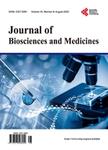Phase II Clinical Study of Three-Dimensional Printed Coplanar Template Combined with CT-Guided Percutaneous Core Needle Biopsy of Pulmonary Nodules in Elderly Patients
Phase II Clinical Study of Three-Dimensional Printed Coplanar Template Combined with CT-Guided Percutaneous Core Needle Biopsy of Pulmonary Nodules in Elderly Patients作者机构:Oncology Department of Yueyang Central Hospital Yueyang China Radiotherapy Center Yueyang Central Hospital Yueyang China Respiratory Department of Yueyang Central Hospital Yueyang China Imaging Department of Yueyang Central Hospital Yueyang China Thoracic Surgery Department of Yueyang Central Hospital Yueyang China
出 版 物:《Journal of Biosciences and Medicines》 (生物科学与医学(英文))
年 卷 期:2024年第12卷第7期
页 面:325-336页
学科分类:100208[医学-临床检验诊断学] 1002[医学-临床医学] 10[医学]
主 题:Pulmonary Nodules Elderly patients Three-Dimensional (3D) Printed Coplanar Template (PCT) Core Needle Biopsy (CNB) Computed Tomography (CT)
摘 要:Background: As the population age structure gradually ages, more and more elderly people were found to have pulmonary nodules during physical examinations. Most elderly people had underlying diseases such as heart, lung, brain and blood vessels and cannot tolerate surgery. Computed tomography (CT)-guided percutaneous core needle biopsy (CNB) was the first choice for pathological diagnosis and subsequent targeted drugs, immune drugs or ablation treatment. CT-guided percutaneous CNB requires clinicians with rich CNB experience to ensure high CNB accuracy, but it was easy to cause complications such as pneumothorax and hemorrhage. Three-dimensional (3D) printing coplanar template (PCT) combined with CT-guided percutaneous pulmonary CNB biopsy has been used in clinical practice, but there was no prospective, randomized controlled study. Methods: Elderly patients with lung nodules admitted to the Department of Oncology of our hospital from January 2019 to January 2023 were selected. A total of 225 elderly patients were screened, and 30 patients were included after screening. They were randomly divided into experimental group (Group A: 30 cases) and control group (Group B: 30 cases). Group A was given 3D-PCT combined with CT-guided percutaneous pulmonary CNB biopsy, Group B underwent CT-guided percutaneous pulmonary CNB. The primary outcome measure of this study was the accuracy of diagnostic CNB, and the secondary outcome measures were CNB time, number of CNB needles, number of pathological tissues and complications. Results: The diagnostic accuracy of group A and group B was 96.67% and 76.67%, respectively (P = 0.026). There were statistical differences between group A and group B in average CNB time (P = 0.001), number of CNB (1 vs more than 1, P = 0.029), and pathological tissue obtained by CNB (3 vs 1, P = 0.040). There was no statistical difference in the incidence of pneumothorax and hemorrhage between the two groups (P 0.05). Conclusions: 3D-PCT combined with CT



